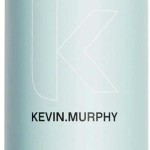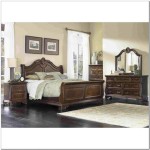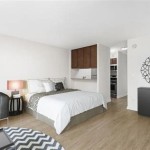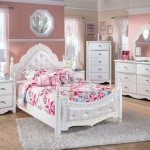```html
Best Air Cooler For Bedroom
Choosing the optimal air cooler for a bedroom environment necessitates a careful consideration of several factors, including cooling capacity, noise level, energy efficiency, and size. An air cooler, also known as an evaporative cooler, operates by drawing warm air through water-soaked cooling pads. As the water evaporates, it cools the air, which is then circulated back into the room. This process provides a refreshing and energy-efficient alternative to air conditioning, particularly in dry climates. However, the effectiveness of an air cooler is highly dependent on the ambient humidity level; they perform optimally in low-humidity environments.
The selection process should begin with an assessment of the specific requirements of the bedroom. Room size is a primary determinant of the cooler's required British Thermal Unit (BTU) rating, which directly affects its cooling capacity. A larger room will necessitate a cooler with a higher BTU rating to effectively lower the temperature. Furthermore, the cooler's water tank capacity dictates how frequently it needs to be refilled; larger tanks offer longer operational periods between refills. The type of cooling pads used also influences the cooler's performance, with materials like cellulose and honeycomb pads offering varying degrees of absorption and cooling efficiency.
Beyond functionality, aspects such as noise level and aesthetic appeal are crucial for a comfortable bedroom environment. Noisy coolers can disrupt sleep and reduce overall comfort. Therefore, selecting a model with a low decibel rating is essential. Many air coolers incorporate features designed to minimize noise, such as variable fan speeds and optimized motor designs. The cooler's aesthetic design should also harmonize with the existing bedroom decor, ensuring that it blends seamlessly into the overall ambiance.
Understanding Cooling Capacity and Room Size
The cooling capacity of an air cooler, typically measured in cubic feet per minute (CFM) or air delivery rate, is directly proportional to its ability to effectively cool a room. A higher CFM indicates that the cooler can circulate a larger volume of air, making it suitable for larger spaces. Matching the CFM to the room size is critical for optimal cooling performance. Overestimating the required CFM can lead to unnecessary energy consumption, while underestimating it will result in inadequate cooling. Online resources and manufacturer specifications often provide guidance on selecting the appropriate CFM based on room dimensions.
Consider a typical bedroom with dimensions of 12 feet by 15 feet and a ceiling height of 8 feet. This equates to a volume of 1440 cubic feet. A general rule of thumb suggests that an air cooler should be able to exchange the air in the room at least once per minute. Therefore, an air cooler with a CFM rating of around 1440 would be suitable for this room size. However, this is just an estimate, and additional factors, such as the number of windows, insulation quality, and the presence of heat-generating appliances, should also be taken into account.
Furthermore, the placement of the air cooler within the bedroom can significantly impact its effectiveness. Positioning the cooler near a window or an open doorway allows it to draw in fresh air, enhancing the evaporative cooling process. Ensuring that the airflow is not obstructed by furniture or other objects will also maximize its cooling potential. Regular maintenance, such as cleaning the cooling pads and refilling the water tank, is also essential for maintaining optimal cooling performance.
Noise Level and Sleep Quality
The noise generated by an air cooler can be a significant concern, particularly in a bedroom environment where quietude is paramount for restful sleep. The sound produced by the fan motor and the movement of air can range from a gentle hum to a disruptive roar. Manufacturers often specify the noise level of their air coolers in decibels (dB). A lower decibel rating indicates a quieter operation. For bedroom use, it is advisable to select a model with a noise level below 50 dB, ideally in the 40-45 dB range.
Several factors contribute to the noise level of an air cooler. The fan design plays a crucial role, with larger blades and slower rotation speeds generally producing less noise. The motor's construction and insulation also affect the sound output. Some air coolers incorporate noise-dampening materials and optimized airflow designs to minimize noise levels. Look for models that specifically advertise "silent" or "low-noise" operation.
Beyond the overall decibel rating, the type of noise produced by the air cooler can also impact sleep quality. Some coolers emit a consistent, monotonous hum, which may be less disruptive than models that produce fluctuating or erratic noises. User reviews and online forums can provide valuable insights into the specific noise characteristics of different air cooler models. Consider reading reviews that specifically address noise issues before making a purchase.
Energy Efficiency and Cost Savings
Air coolers are generally more energy-efficient than air conditioners, consuming significantly less electricity to achieve a comparable cooling effect. This translates into lower energy bills and a reduced environmental footprint. The energy efficiency of an air cooler is typically measured in terms of its power consumption in watts. A lower wattage rating indicates a more energy-efficient model. Look for air coolers that are Energy Star certified, as these models meet stringent energy efficiency standards.
The actual energy savings achieved with an air cooler will depend on several factors, including the local climate, the frequency of use, and the electricity prices. In dry climates, where air coolers are most effective, the energy savings can be substantial compared to using an air conditioner. Even in more humid climates, an air cooler can provide a supplemental cooling solution, reducing the reliance on air conditioning and lowering energy consumption.
In addition to lower electricity bills, air coolers also offer cost savings in terms of maintenance. They require less frequent and less expensive maintenance compared to air conditioners. The primary maintenance tasks involve cleaning the cooling pads regularly and refilling the water tank as needed. There are no refrigerant leaks to worry about, and the overall lifespan of an air cooler is generally longer than that of an air conditioner. These factors contribute to the long-term cost-effectiveness of air coolers.
Consider also the features that enhance energy efficiency. Some air coolers have programmable timers, allowing them to be automatically turned on and off at specific times. Others have multiple fan speed settings, allowing users to adjust the cooling intensity and energy consumption as needed. Features like these can help to further optimize energy efficiency and minimize electricity bills.
Selecting the appropriate air cooler necessitates assessing individual requirements, taking into account factors such as room size, climate, noise sensitivity, and energy consumption preferences. By carefully evaluating these aspects, one can effectively choose an air cooler that optimizes cooling performance and maximizes comfort within the bedroom environment.
```
The 9 Best Air Coolers To Chill Out In Heatwave Tried And Tested

Do Swamp Coolers Actually Work Wirecutter

The Best Air Coolers To Shop In 2025 For When A Fan Won T Cut It

Best Air Coolers 2025 Tried And Tested In 30c Heat The Independent

2024 S Best Portable Air Conditioners Reviews Guide Ptr

Best Sell High Efficiency 30l Water Evaporative Room Ac Air Cooler For Summer And Price Made In Com

Best Portable Air Conditioners 2025 Tried And Tested To Cool Your Home The Independent

Air Cooler With Dehumidifier Is It The Ultimate Solution For Comfort This Summer Morrisdirect Co Morris Direct

The 6 Best Portable Air Conditioners Of 2025 Reviews By Wirecutter

Air Cooler Vs Electric Fan Which Is Best For Your Home








